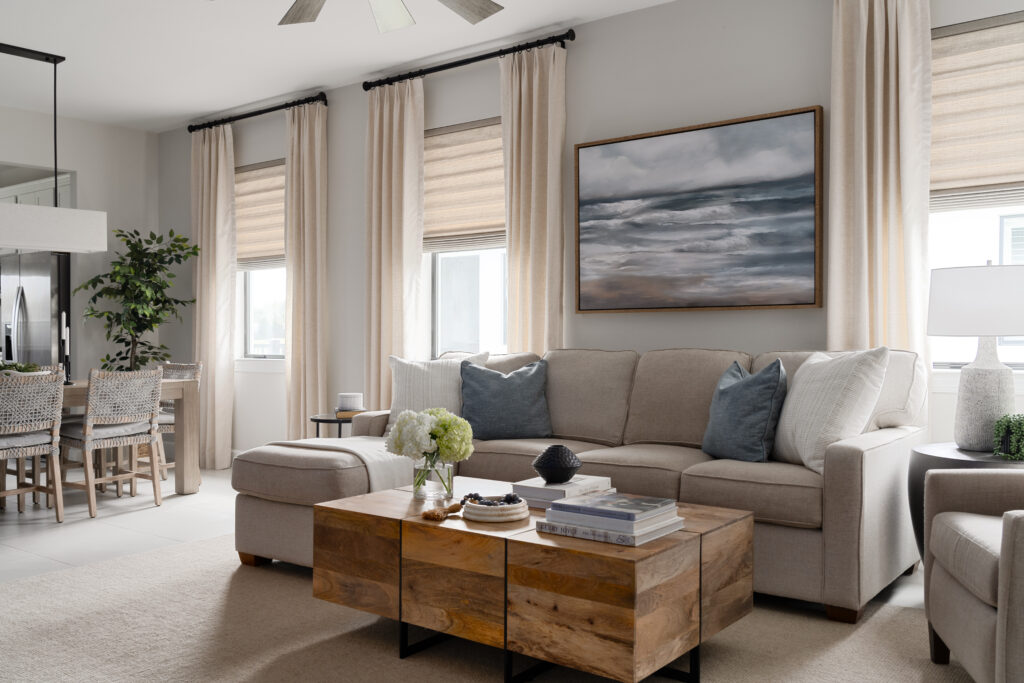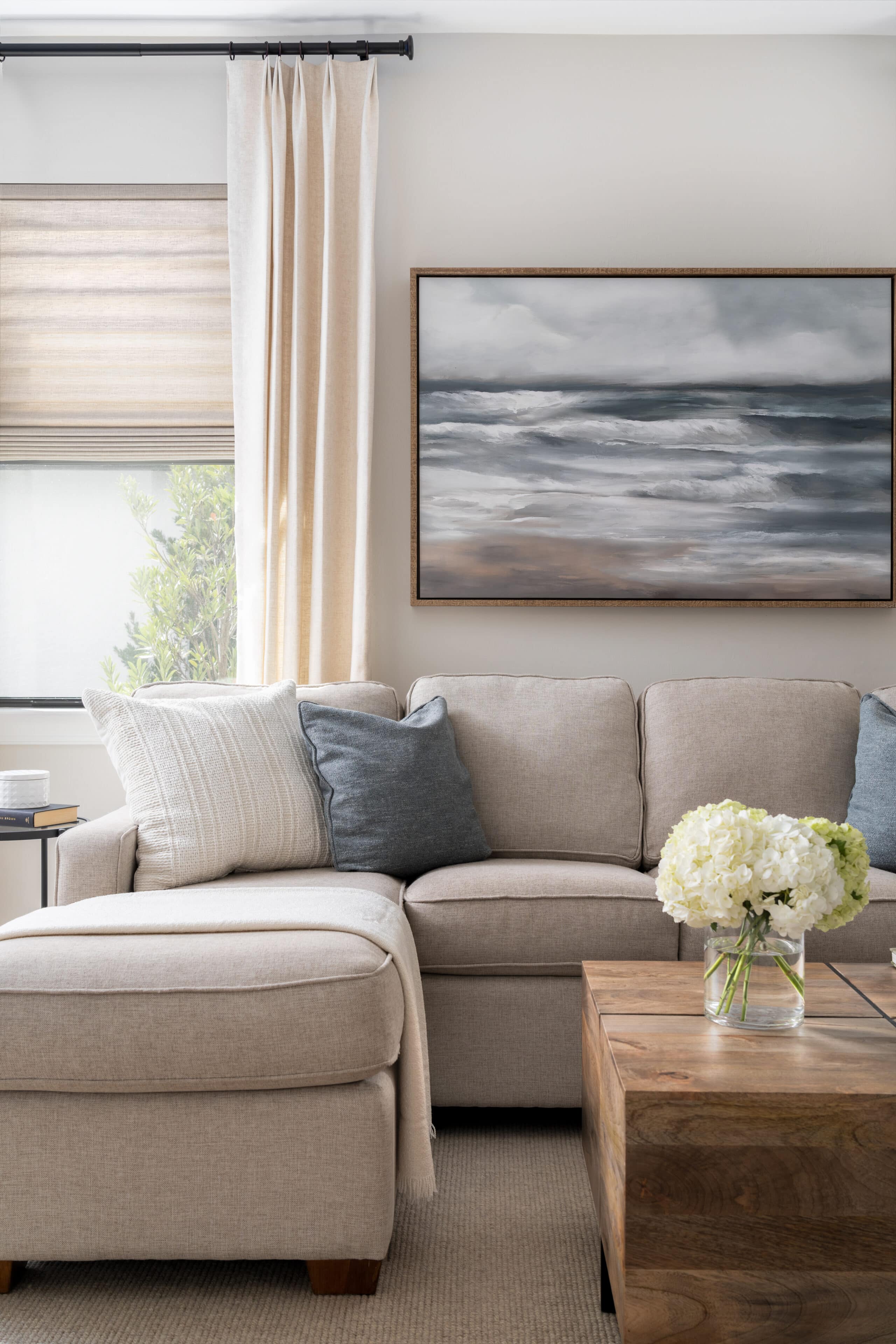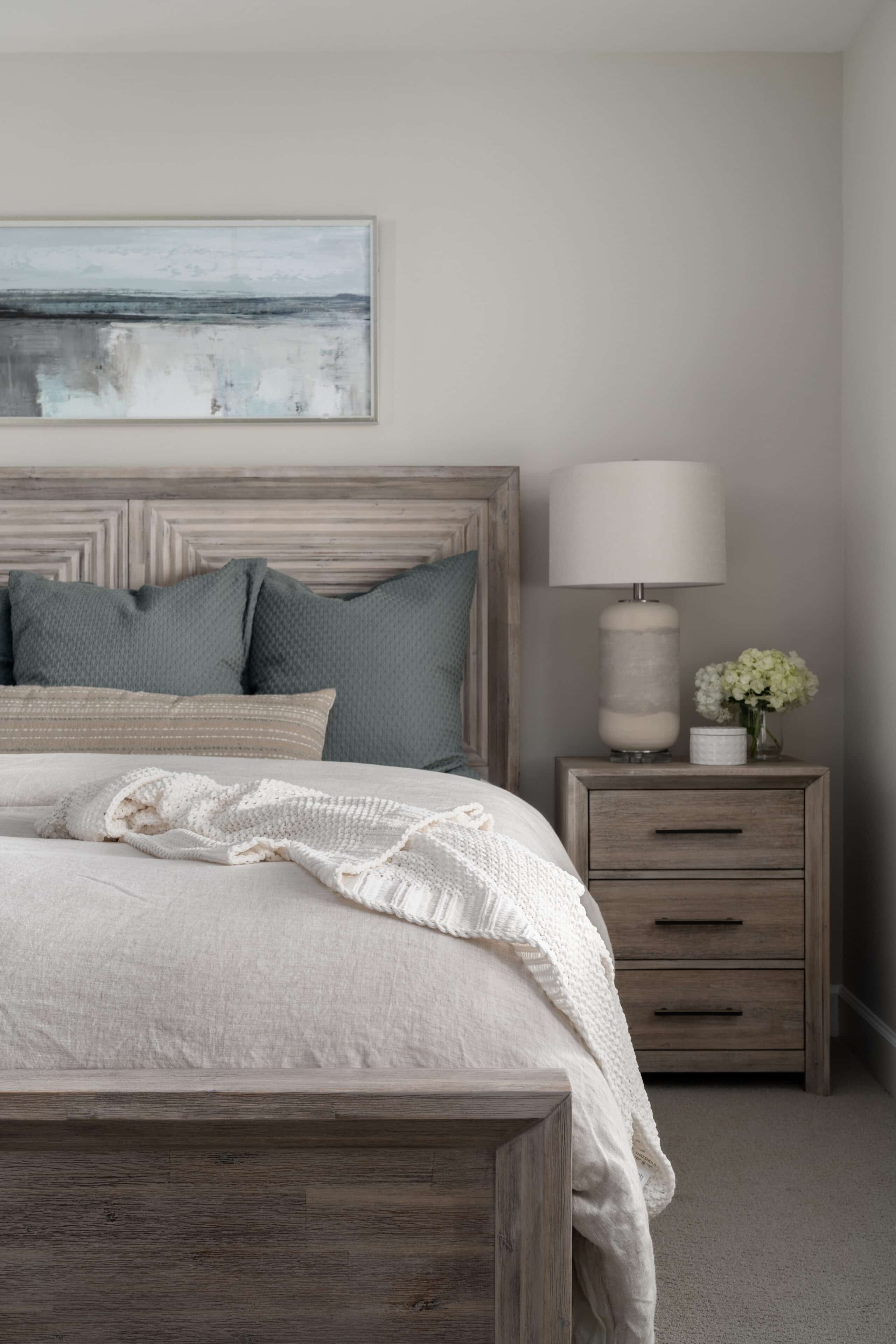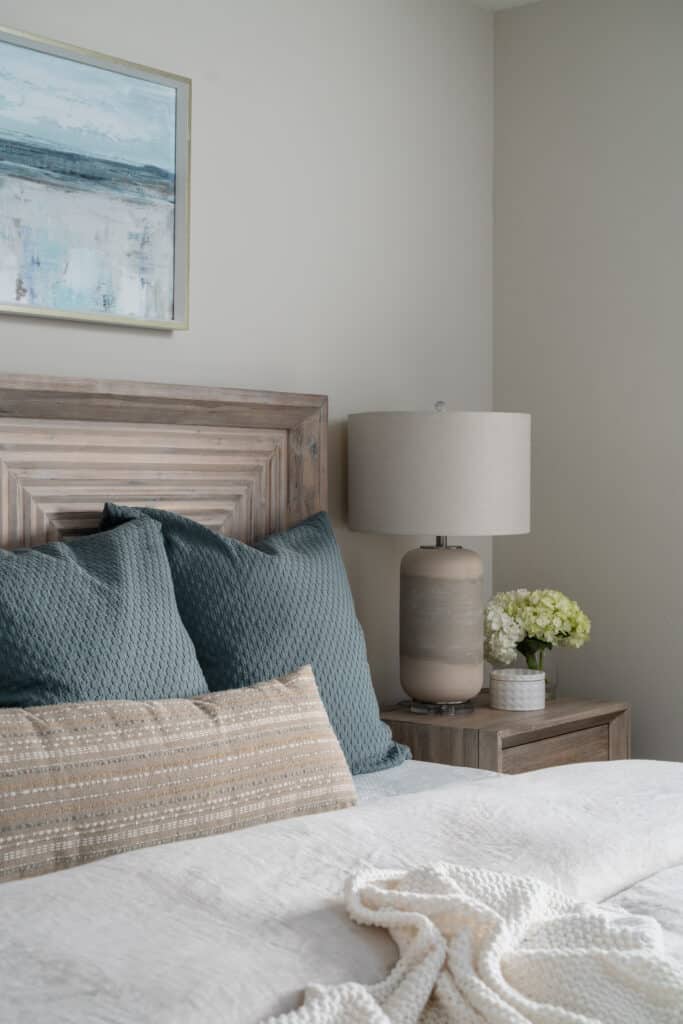For one of our most recent projects, located in Lakewood Ranch, our client wanted to stay with a neutral scheme throughout their home. When designing a space in a monochromatic palette, it’s very important to add contrasting neutrals, layers of textures and patterns, and variations of natural wood tones.


For this living room, we brought in muted blues and deeper wood tones to give this space depth and a pop of color as an accent. The abstract artwork brings in all the deeper tones from the coffee table and pillows.

HERE ARE SOME THINGS TO CONSIDER WHEN DESIGNING A NEUTRAL SPACE:
- Keep it Timeless: Neutrals are classic and don’t go out of style easily. Consider using a neutral base for a larger, more permanent backdrop and introduce trends through accessories and small accents that can be easily updated throughout the years.
- Natural Elements: Bring in elements from nature, such as plants, stones, or natural fibers. These can add warmth and a touch of organic beauty to a neutral space.
- Layering: Layering different shades of neutrals can create depth and dimension. For example, use lighter shades for walls and larger elements, and darker shades for accents or smaller details.
- Balance of Neutrals: Use a mix of neutral colors to create visual interest. Combine shades of white, beige, gray, and black to achieve a balanced and harmonious design.
- Variation of Textures: Introduce different textures to add depth to your design. Consider using materials such as wood, a mix of metals and fabrics to create contrast.
- Accent Colors: While the main palette is neutral, you can incorporate a few accent colors for emphasis. Choose one or two colors that complement the neutrals and use them sparingly for accents.
- Patterns: Introduce subtle patterns or textures in your furnishings or decor. Subtle prints and geometric patterns can break up the monotony of the solid neutrals.



